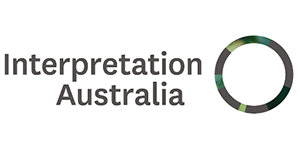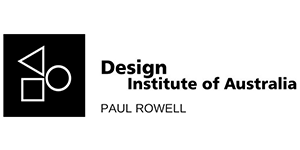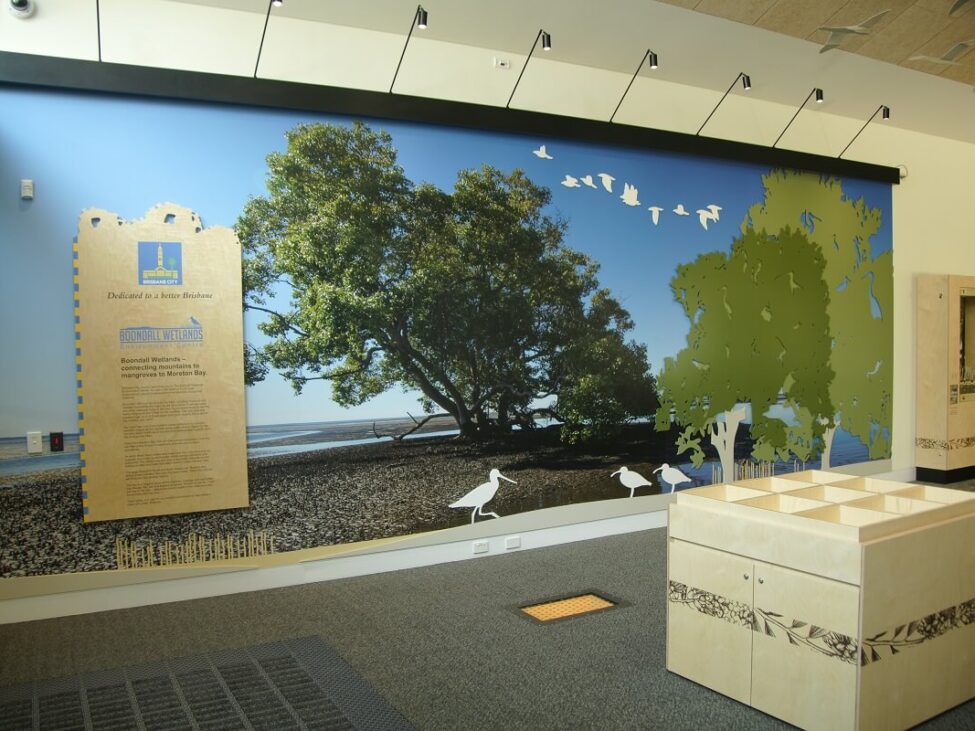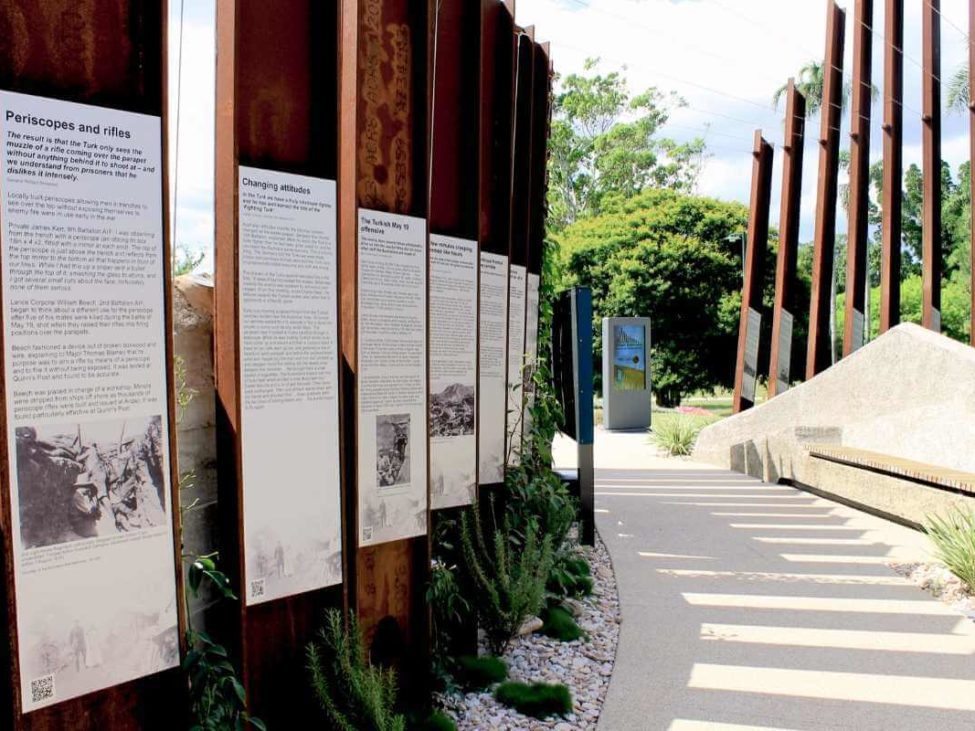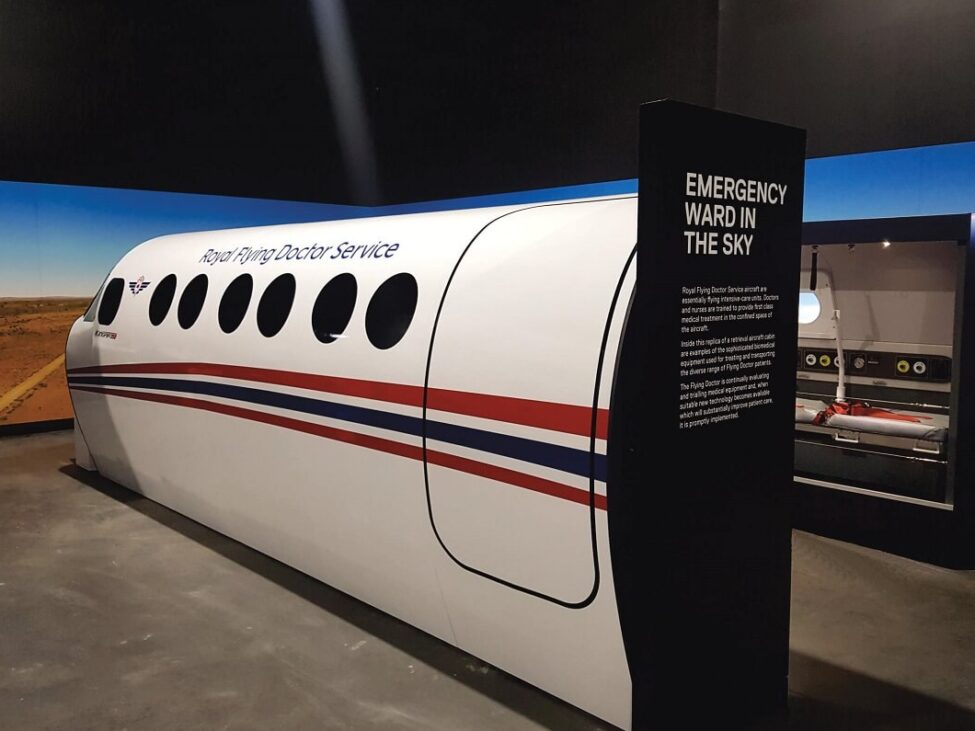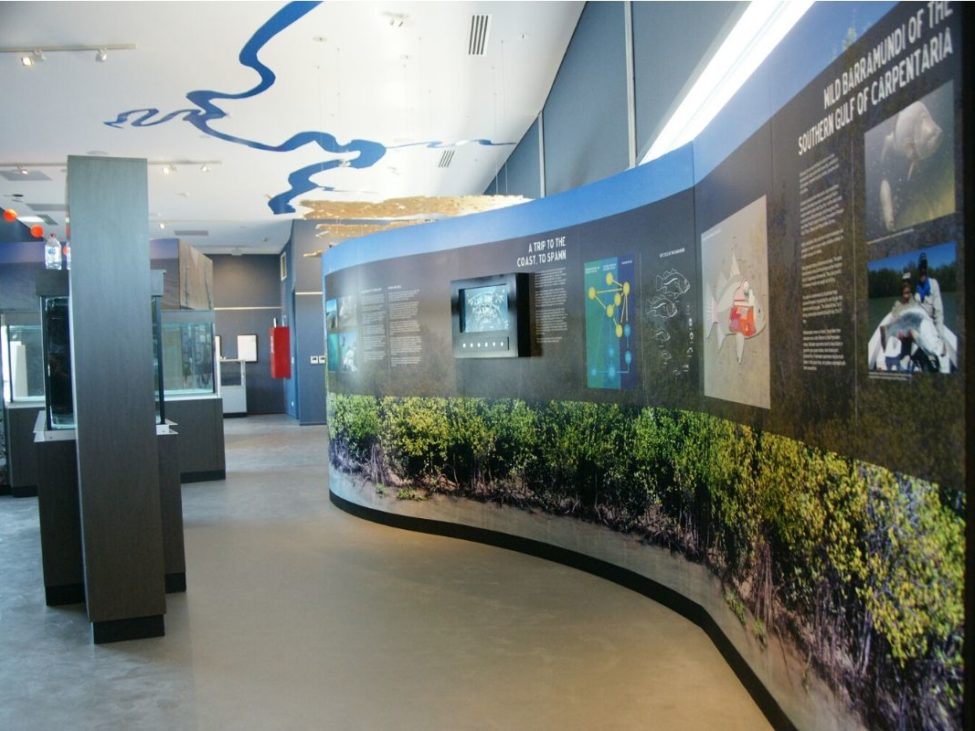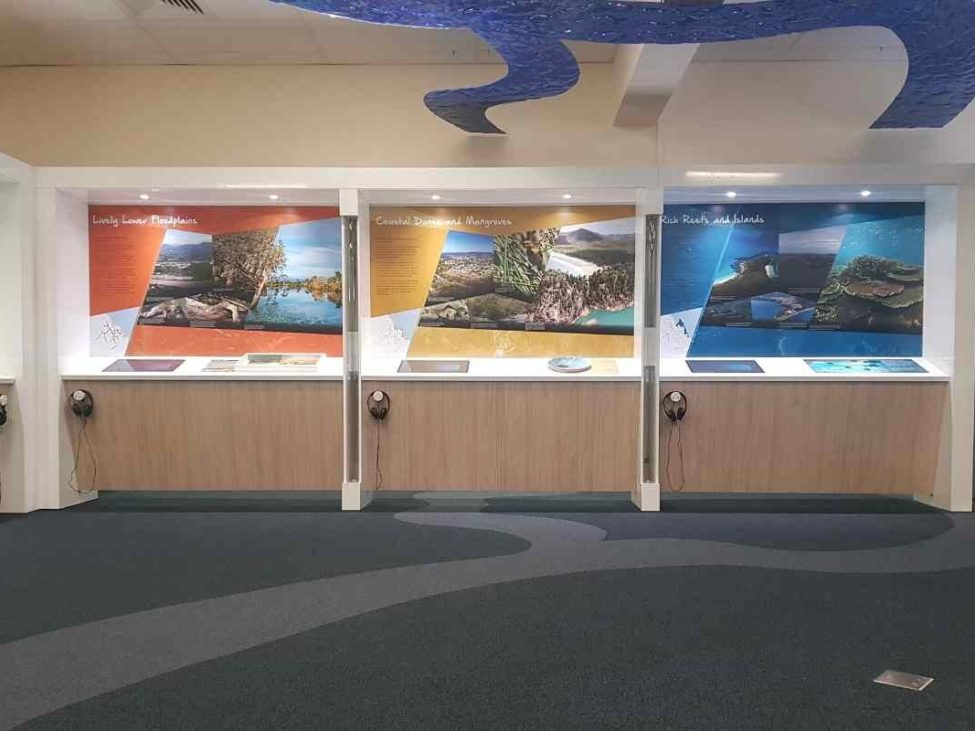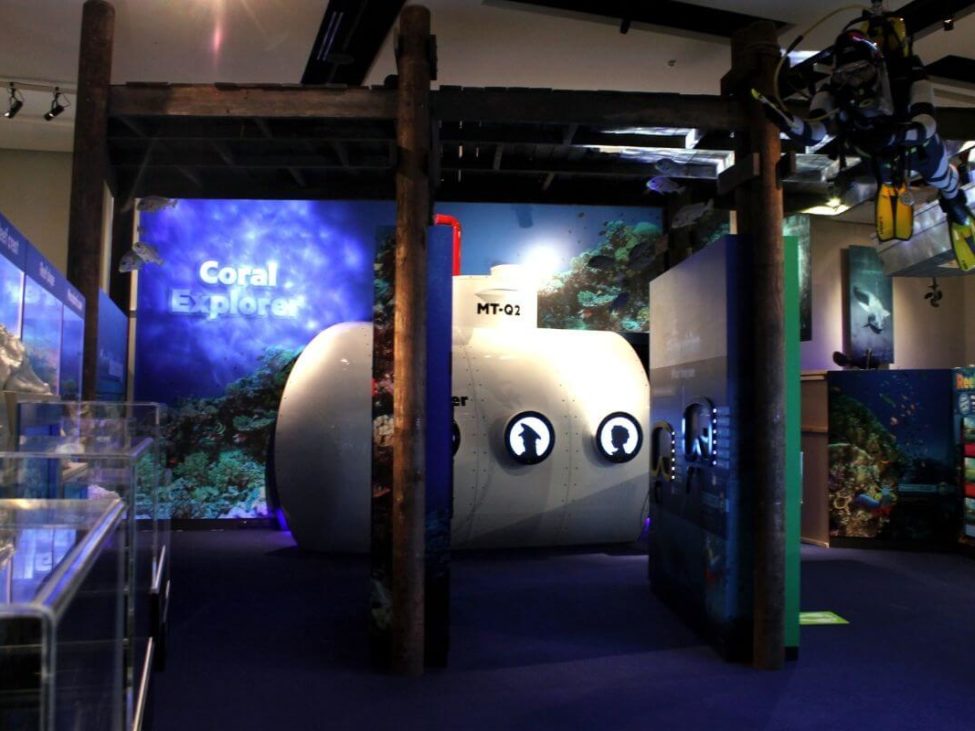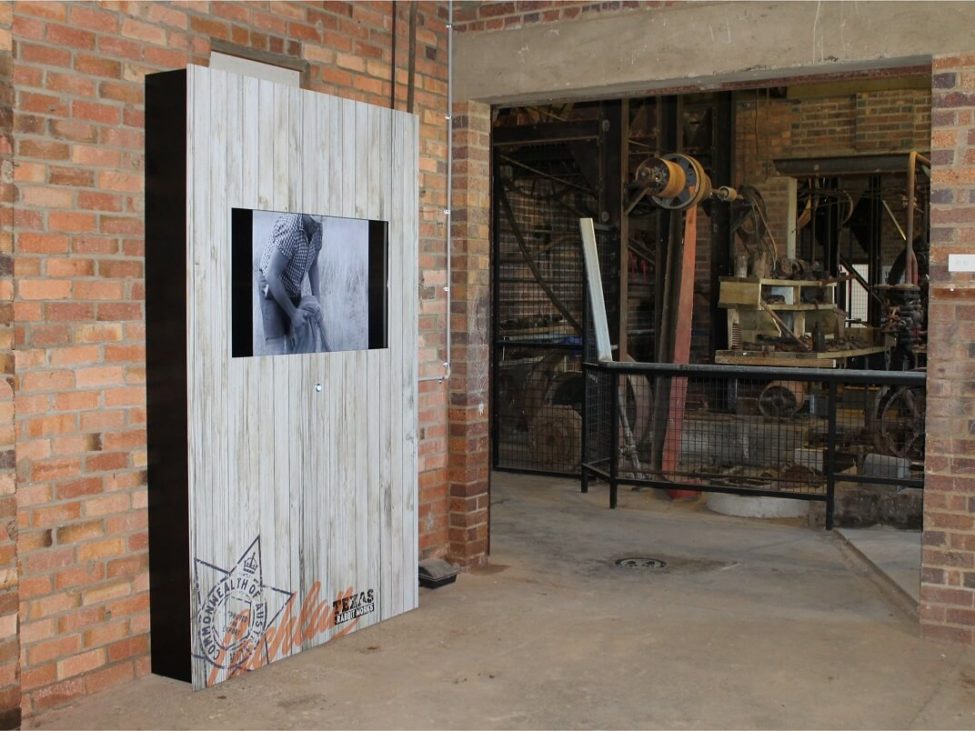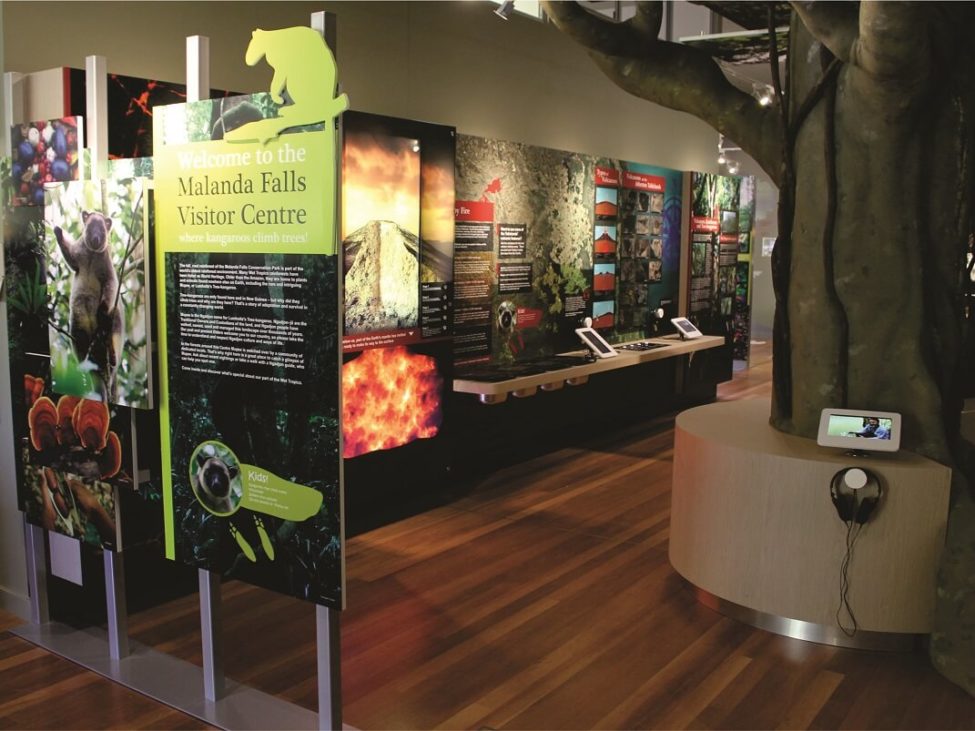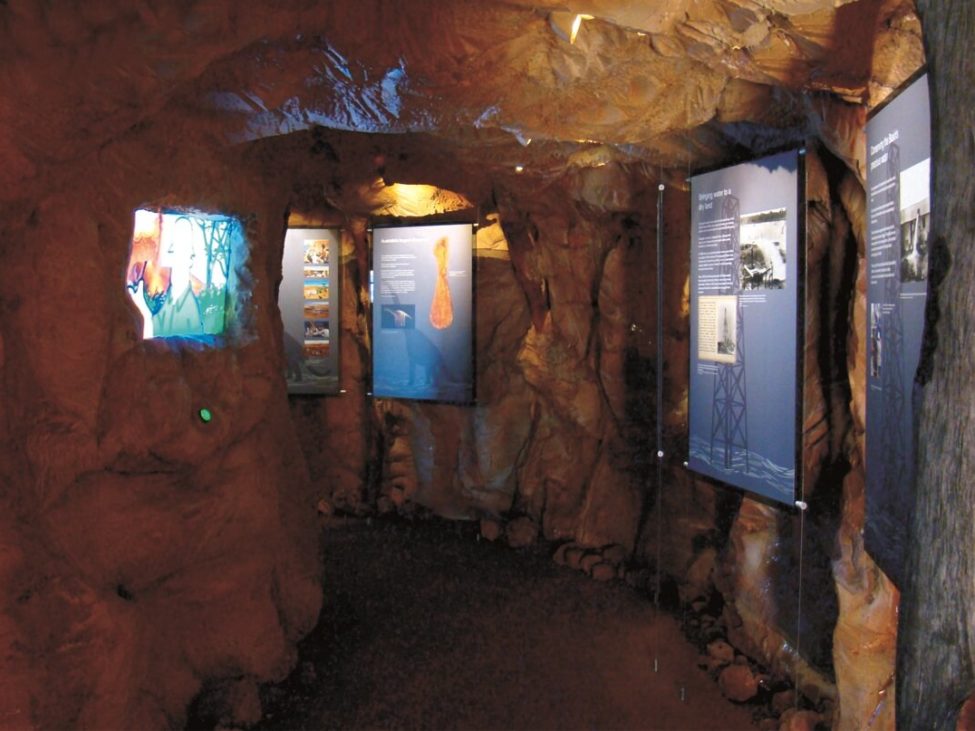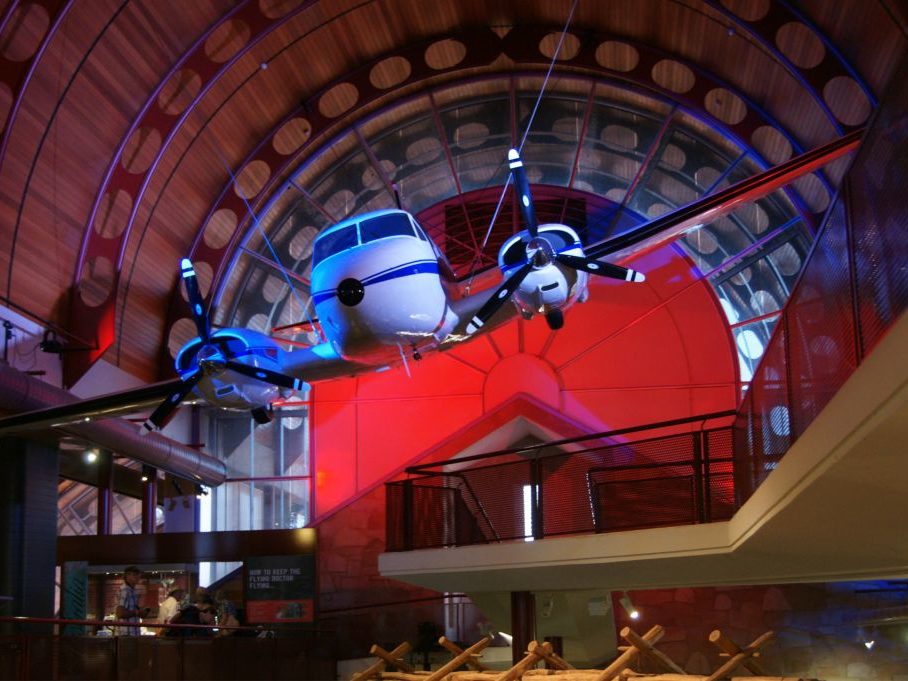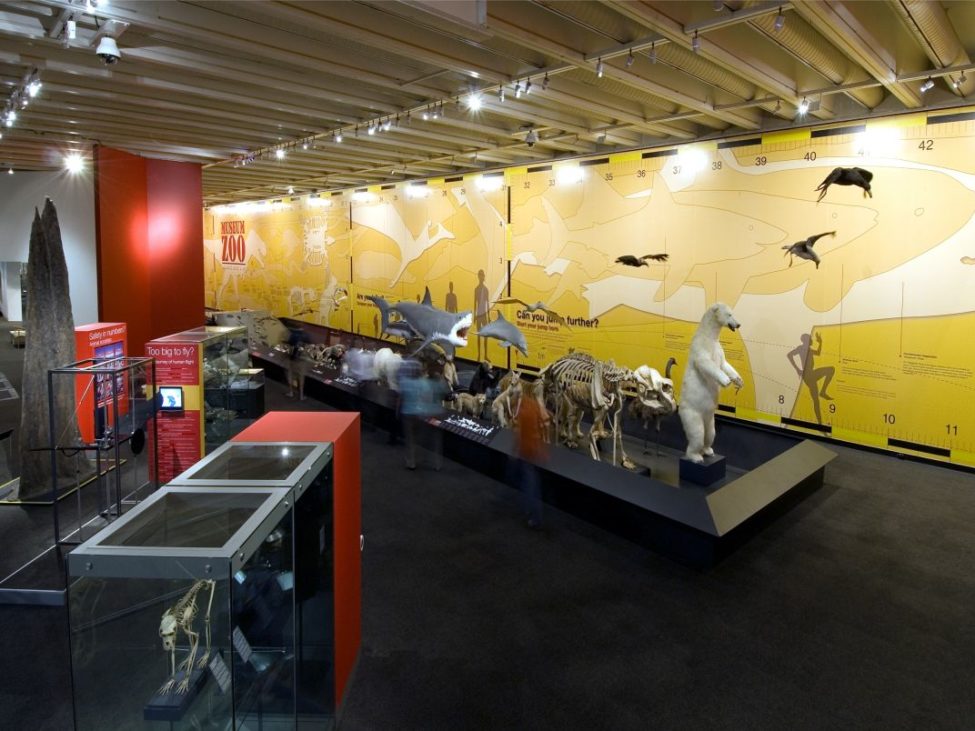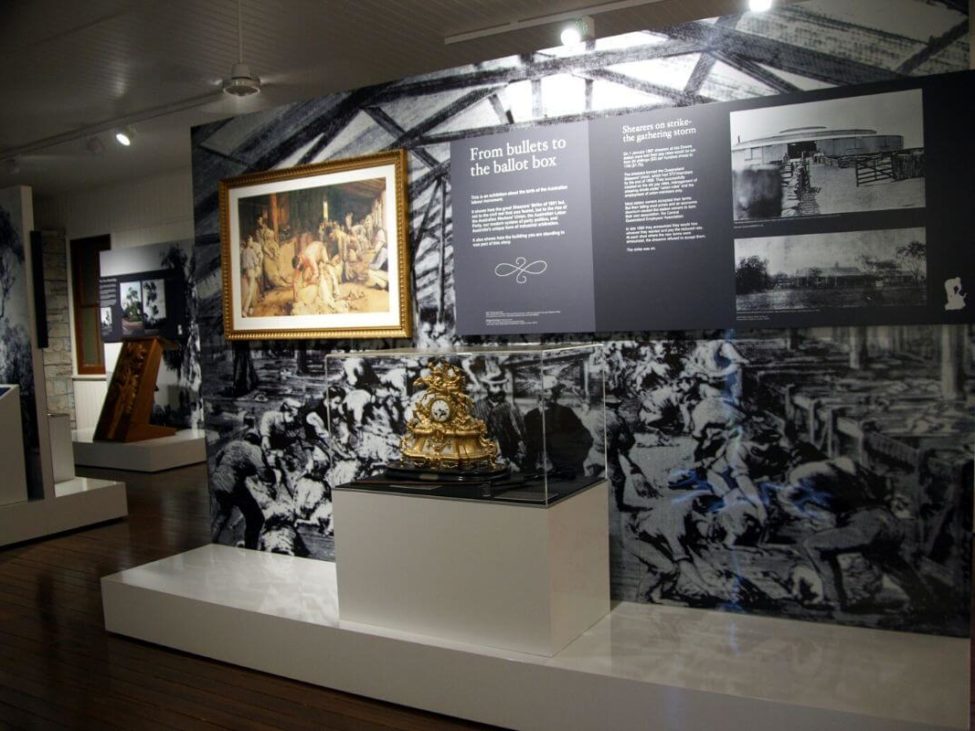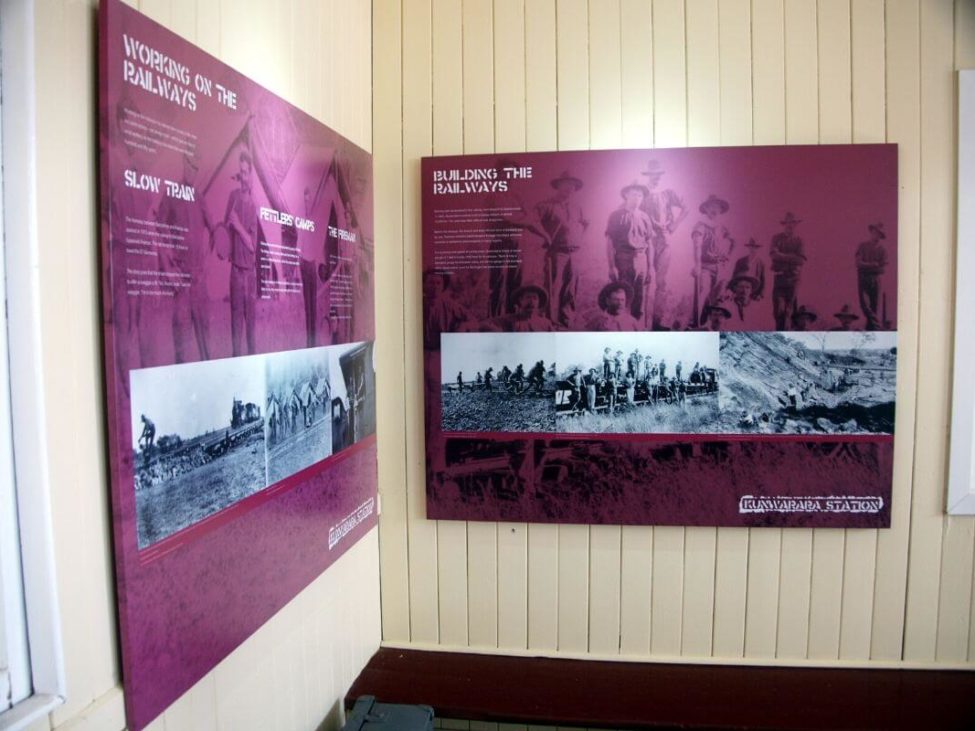Interpretation is a process which at its core goal seeks to enhance meaning. This could be through teaching, storytelling, writing, art, design or curation. The interpreter seeks to communicate more than the facts, they seek to create and enrich understanding and connection through experiential learning. Brandi Projects have provided interpretive design, planning and fabrication for museums, visitor centres and galleries both in Queensland and across Australia. We have over 30 years’ experience in scientific, environmental, cultural and Indigenous, historical and heritage interpretation.
Our job in design and fabrication of your visitor experience, exhibit, or display is to make connections by telling stories in new and interesting ways. Interpretation helps to bridge the gap between the audience and the subject. Facts on science, history, art or nature can be brought to life in new and exciting ways for the audience. Not simply for entertainment, the purpose can also be to stimulate further action, such as in conservation interpretation.
We make meaningful connections
The first person to set down theories about heritage interpretation, Freeman Tilden, said that “the use of original objects, by firsthand experience and by illustrative media” reveals meanings and relationships for the visitor:
“Through interpretation, understanding; through understanding, appreciation, through appreciation, protection,” Freeman Tilden.
Good interpretation involves all the senses in one whole immersive experience.
For instance, historical facts can be presented in such a way that the visitor is able to ‘step into’ history, rather than simply be told information about it. They can absorb sights, sounds, and emotional experiences and engage with real-life stories. Built environments, artefacts, lighting, sound and film can assist in producing multi-sensory engagement for historical displays.
“Interpretation communicates ideas, information and knowledge in a way which helps visitors to make sense of their environment. Good interpretation will create engaging, unique and meaningful experiences for visitors and takes many forms including such things as guided walks, talks, drama, art, sculpture, displays, signs, brochures and electronic media,” explains Interpretation Australia.
Interpretation centre design and planning
We help with your visitor experience strategy, reflecting your goals and needs, and that of your prospective audience. This involves building a roadmap for how your concepts will be communicated. It means planning how to bring the experiences out of stories and ideas for a varied audience.
Design concepts are used to interpret stories and ideas in new and interesting ways. Interpretive design goals are to bring forth inspiration, emotion, and reflection, thereby creating a powerful audience-subject connection. This leads to greater understanding and engagement.
Collaboration
We can work with trusted experts in the field of natural, cultural or heritage interpretation. We ensure that design, fabrication and technology, interactivity, curation and planning are a cohesive unit working towards building audience understanding.
Interpretation Portfolio
Let’s work together to build an engaged audience
We look forward to hearing about your upcoming project.
Proud Member Of




